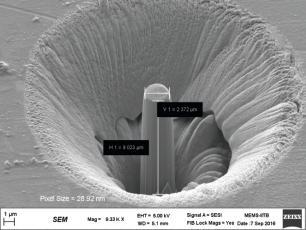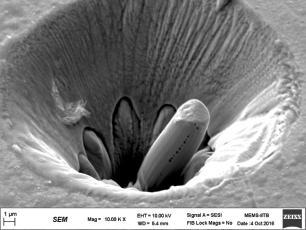Nanoindentor facility
Bulk materials Multiphase materials MEMS devices-cantilever bending experiments to measure the stiffness, electrical experiments for cantilever bending experiments. Micropillar Experiments Nanostructured materials Scratch tests: A) Protective coatings B) Depth profiling of layered materials Biological materials Bone/Hair samples with proper sample preparation and polishing. Powder samples: Loose particles/powders cannot be done. Powder samples can only be done if pellet is made of the powder using a binder followed by sintering. (Dimensions of pellet- diameter of 10mm and height not more than 5mm). After the application of the load by the indenter, the pellet should not release the particles. Such samples would not be done as it can damage the indenter. Proper polishing of the pellet mounted sample has to be done.
Room No.B-14, Basement, Dept. of Metallurgical Engg. and Materials Science, IIT Bombay. I.I.T. Bombay, Powai, Mumbai - 400076
Contact No:022-21593637
- Miss.Karuna J Dhale



